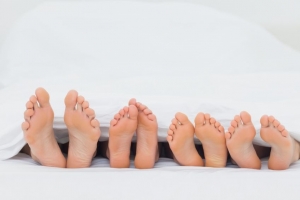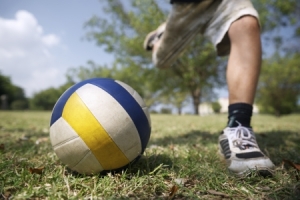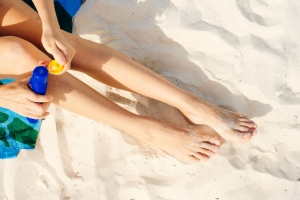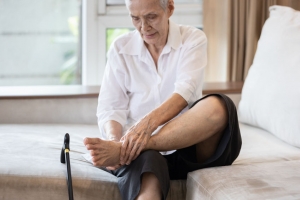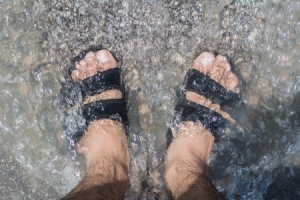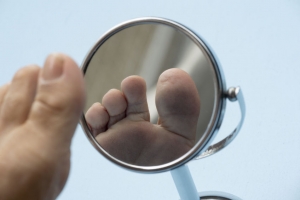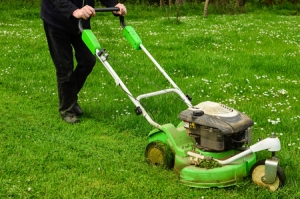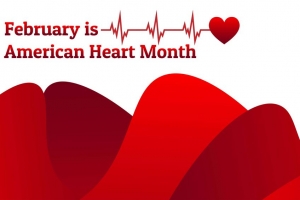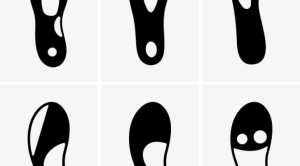Connect With Us
Blog
Displaying items by tag: Foot Health
10 Fun Facts About Feet
At Superior Foot & Ankle Care Center we want our Los Angeles County patients to appreciate their feet. All too often it’s easy to take our feet for granted–until they start to hurt or stop functioning the way they should to enable us to live our active and busy lives. We’d like to call your attention to some amazing facts about your feet that you may not know.
- It takes a lot to build a good foot! Together your feet have 52 bones (which is about 25% of the total bones in your body), 66 joints, 38 muscles, 20 tendons, and 214 ligaments.
- Your feet contain approximately 8,000 nerves–more per square centimeter than any other part of your body. Anybody feeling ticklish?
- The Achilles tendon is the longest and strongest tendon in your body. It’s also the most injury-prone.
- It’s no wonder feet tend to get sweaty. They contain 250,000 sweat glands which can pump out about half a pint of perspiration every day.
- With every step you walk, each of your feet absorbs one and half times your body weight. When you run, your body is hit with the force of up to five times your body weight. Over just one day feet are hit with a couple of tons of pressure.
- Want to go for a walk? On average, a person logs 115,000 miles in a lifetime–this is about the distance of about 5 trips around the earth.
- To grow out a toenail completely takes 12-18 months.
- Women suffer from foot and ankle problems four times more often than men do. This is usually linked to the shoes they wear.
- It’s common for people to have one foot that’s bigger than the other. You should always buy shoes to fit the larger foot.
- All babies have flat feet. The arch of the foot does not develop until the age of 3.
Now that you know more about your feet and how truly wonderful they are, take steps to ensure they stay healthy all your life. Making healthy lifestyle choices, wearing quality shoes that fit properly, and contacting our Long Beach office at (562) 420-9800 office for an appointment as soon as you notice any pain or concerning symptoms in your feet and ankles are all good ways to be proactive in the health of your feet. Our podiatrists, Dr. Victoria M. Foley and Dr. Constance Ornelas, will track down the source of your discomfort promptly and prescribe the correct treatment to get you back on track.
Healthy Lifestyle Choices Improve Juvenile Arthritis Symptoms
At Superior Foot & Ankle Care Center we treat podiatric problems in Los Angeles County patients of all ages. In July, we recognize Juvenile Arthritis Awareness Month. Nearly 300,000 children and teenagers suffer from Juvenile Arthritis (JA). Some forms are similar to the types of arthritis that adults suffer from, and some are unique to young people.
Many types of JA are autoimmune or autoinflammatory in nature, meaning that the immune system mistakenly attacks healthy tissue with inflammatory chemicals. These can cause joint pain and inflammation, and skin disorders, and internal organ issues. If your child is experiencing joint pain in their feet or ankles, the first step is to make an appointment at our Long Beach office at (562) 420-9800 office so that our podiatrists, Dr. Victoria M. Foley and Dr. Constance Ornelas, can examine your child and determine if the discomfort is strictly podiatric or if arthritis or another disease may be the source. Once a diagnosis is determined, the foot doctor will advise you on treatment or refer you to a specialist in the area of concern. Just as with adults, healthy lifestyle choices can play a key role in managing JA and preventing its progression. Below are three to focus on:
Exercise—Although some types of movement may be painful for children and teens with joint disorders, regular exercise and physical activity is also one of the best weapons in the fight against arthritis. Depending on your child’s age, they may need help finding the activity that best suits their particular type of arthritis. Some good choices include swimming and aquatic classes (the buoyancy of the water naturally reduces pressure on the joints), biking and yoga. Expose your child to several different activities and as they mature, they will gravitate to those that best suit them.
Nutrition—Lower weight means less pressure on joints, especially those in the knees, ankles, and feet. Some foods are also known to decrease inflammation while others spark an inflammatory response. Make healthy eating a family habit and involve your children in choosing nutritious foods and then preparing and eating them together.
Mental Health—Growing up is hard enough without having a chronic disease. Make sure your child has a good support network, spends time with friends, and participates in activities that build confidence. Model positive coping skills for your child and seek professional help if necessary.
Avoid These 4 Podiatric Pitfalls on Vacation
At Superior Foot & Ankle Care Center we know many of our Los Angeles County patients can’t wait to take a vacation. After a year plus of Covid restrictions, you’ve got places to go and people to see! Our goal is to make sure a painful foot problem doesn’t slow you down. Below are four potential pitfalls you’ll want to avoid on your summer vacation.
- Not Wearing Socks with Sandals—Yes, you read that right. While normally wearing socks with sandals would be a fashion “faux pas,” if your trip starts with an airplane flight it’s highly encouraged. Most security checks require you to remove your shoes. Every person who walks with bare feet through the scanner machine has the potential to leave behind bacteria or fungi that can result in athlete’s foot, fungal toenails or another infection which are passed on by direct contact for the people who follow them.
- Getting New Shoes for Vacation—It’s great to find the perfect pair of shoes to go with your new shorts and sundresses, but packing them before wearing them can be a big mistake. Even though you should always try on both shoes when purchasing and spend some time in the store walking around, new shoes can still surprise you with blisters or rubbing in places you didn’t expect. Try them out at different times (your feet are largest and most swollen at the end of the day) for a day or two before you go to make sure they are comfortable and pain-free.
- Being a Bare-Foot Beach Bum—With the sun beating down on it, the sand at the beach can heat up to over 100 degrees F. Even a few steps from the parking area to your beach blanket can result in dangerous blistering burns to the soles of your feet. If you like to take walks on the beach, a pair of water shoes can also help you avoid sharp objects that can cause puncture wounds and other hazards like jellyfish that have washed up on the shore.
- Forgetting to Pack Foot Care Essentials—Even if you’re only traveling with a carry-on bag you should have room for a few small items that can make a big difference in foot comfort while on vacation. If our podiatrists, Victoria M. Foley and Dr. Constance Ornelas, have prescribed a custom orthotic, don’t leave it home! It’s also a good idea to bring moleskin to prevent painful blisters, foot powder, nail clippers, and an emery board.
We hope you and your family have a great vacation this summer. If you find a foot or ankle is hurting you when you return, or you notice other unusual symptoms in your feet, be sure to contact our Long Beach office at (562) 420-9800 office promptly for an appointment.
Take Steps to Prevent Skin Cancer This Summer
At Superior Foot & Ankle Care Center we know that our Los Angeles County patients enjoy the sun nearly year-round, but May is Skin Cancer Awareness Month and a good time to emphasize the importance of protecting your skin from the harmful effects of UV rays.
Research shows that currently one in five people will develop some form of skin cancer by the age of 70. In fact, there are more cases of skin cancer diagnosed each year than all other cancers combined. But skin cancer is also highly treatable and has a very high rate of survival when detected early. Below are steps you can take to lower your risk for this potentially deadly disease.
Be on the Lookout—one big advantage of skin cancer over other carcinomas is that you can see it. Commit to inspecting the skin on your feet and the rest of your body monthly. The Skin Cancer Foundation suggests that you lookout for:
- New—blemishes, freckles or moles that have appeared that weren’t present before
- Changing—growing larger, losing their borders, becoming mottled or containing new colors could all signal a potential cancer
- Unusual—any mark on your skin that bleeds, crusts over or is itchy or sore for more than three weeks
When it comes to your feet, be sure to look at the tops and the soles of your feet and between each toe. Look for spots on your nails or in the skin under the nail as well. If you see anything you’re concerned about, contact our Long Beach office at (562) 420-9800 to schedule an appointment with our podiatrists, Dr. Victoria M. Foley and Dr. Constance Ornelas, promptly.
Take Cover—seek shade during the hottest hours of 10 a.m. – 4 p.m. If you spend a large amount of time in the sun or are extra fair, freckled or have other issues that increase your risk for skin cancer consider shirts, hats and other clothing made with UPF (ultraviolet protection factor).
Be Generous with the Sunscreen—many patients often skip their feet when applying sunscreen but it’s just as essential there as any exposed skin. And not just when you are at the beach or pool. If you’re wearing open sandals for a day of shopping or running errands be sure to apply a broad-spectrum sunscreen with an SPF of 15 or higher about 30 minutes before going out. If you’re playing sports or swimming, choose a water-resistant variety and reapply after coming out of the water or every two hours.
Say No to Tanning Beds—these increase your risk for all types of skin cancer including dangerous melanomas by up to 75%. Even one time can increase your risk. Don’t let teens use tanning beds ever.
You can decrease your risk of skin cancer. If you have any questions about this disease and your feet, don’t hesitate to contact us.
5 Foot Care Tips for Seniors
Did you know that the average person walks between 2.5 and 5 miles a day? At Superior Foot & Ankle Care Center we know that means our Los Angeles County senior patients have likely put quite a few miles on their feet. In honor of Older Americans Month 2021, we’d like to offer some tips for protecting podiatric health as you age.
- Listen to your feet. Foot pain, shoes that don’t seem to fit properly anymore, and fatigue in your legs or feet are all ways that your feet communicate that something isn’t right. Don’t put off seeking an evaluation of these symptoms. Contact our Long Beach office at (562) 420-9800 to schedule an appointment with our podiatrists, Victoria M. Foley and Dr. Constance Ornelas.
- Keep feet clean and dry. Wash daily with soap and water and dry thoroughly (paying particular attention to the spaces between your toes). If you tend to sweat excessively, keep an extra pair of socks with you and change when you notice your feet feel damp. This will go a long way in preventing fungal infections like athlete’s foot and toenail fungus.
- Check your feet daily. Look over your entire foot (or ask someone to do it for you) for any unusual changes. Toenail or skin discoloration, bumps, bruises and swelling may all indicate a developing foot or even systemic problem. Diseases such as diabetes, hypertension and arthritis often first manifest in the feet.
- Choose shoes wisely. Your footwear is one of the biggest predictors of podiatric health. Look for styles that have good arch support and heel and insole cushioning. Treads should be non-slip but not have rubber over the toes which can lead to tripping. Ask the podiatrist for recommendations of shoe styles if you have a deformity such as a bunion or hammertoe. Lastly, get your feet professionally measured to ensure a proper fit and always try on both shoes before purchasing.
- Reduce fall risk. Falls are the number one cause of both fatal and non-fatal injuries in seniors. Safeguard your home by installing additional stair rails and lighting. Remove throw rugs, plant stands, electrical cords that are across walking areas, and other clutter to lower your chances of falling.
Your podiatrist is your partner in making sure your feet continue to be healthy and enable you to keep on living the active life you love. If you have any questions or concerns, don’t hesitate to contact us.
7 Ways To Prevent Fungal Foot Infections
A common problem that we at Superior Foot & Ankle Care Center treat in our Los Angeles County patients is fungal infections. Conditions such as athlete’s foot and toenail fungus are very uncomfortable and can easily spread to other parts of the body as well as other people. Most fungal infections are spread by direct contact. That means there are several precautions you can take to greatly reduce your risk. Below are seven tips to help you avoid fungal infections.
- Keep your feet covered in public places. Gyms, community pools, nail salons, and seaside restrooms and changing areas all see a heavy amount of barefoot traffic. Wearing flip flops or shower shoes will prevent your feet from coming in contact with surfaces where the fungi have been deposited.
- Wash your feet daily and dry completely. This simple act will go a long way to keeping fungal and other infections away. Take extra care to dry between your toes as this is where athlete’s foot most often starts.
- Make sure socks stay dry. Fungi love dark, moist places—that’s why the inside of your socks and shoes are the perfect breeding ground. If your feet tend to perspire profusely, keep an extra pair of socks with you and change as soon as you notice your feet feel damp.
- Use foot powder. A dusting of an anti-fungal or talcum powder will aid in keeping feet dry throughout the day.
- Don’t share items that touch another person’s feet. Socks, shoes, nail files, clippers, and even towels can be a vehicle to pass on a fungal infection.
- Choose shoes made of breathable materials. This will allow for air circulation around your feet and reduce the amount of moisture trapped in your shoes.
- Alternate your shoes. It’s helpful to allow shoes to air out for a day or two between wearings.
If you are experiencing red, itchy, flaky skin on your feet or nails that are discolored, thickened, and crumbly it’s important that you schedule an appointment at our Long Beach office at (562) 420-9800. Our podiatrists, Dr. Victoria M. Foley and Dr. Constance Ornelas, will examine your feet and prescribe the correct treatment if you have a fungal infection.
April is National Foot Health Awareness Month
Feet are often taken for granted and not given much attention, but in April we celebrate National Foot Health Awareness Month. At Superior Foot & Ankle Care Center, we want to take this opportunity to share with our Los Angeles county patients some simple steps you can take to protect the health of your feet and avoid many common podiatric disorders.
- Inspect your feet regularly. When is the last time you really looked at your feet? Changes in skin color or the condition of your toenails, unexplained bruising, lumps, and cuts that don’t heal are all potential signs of a foot problem. Many deformities like bunions and hammertoes also occur gradually. The majority of podiatric disorders can be more easily and better treated in their early stages. If you spot anything concerning, contact our Long Beach office at (562) 420-9800 and make an appointment with our podiatrists, Victoria M. Foley and Dr. Constance Ornelas, so that they can examine your feet and determine if there is an issue that needs to be addressed.
- Make smart shoe choices. One of the most important determining factors for the health of your feet is what you put on them. Proper fit is essential. Don’t wear shoes that feel tight or squeeze your toes together. Look for styles with roomy toe boxes, good arch support, and a firm fit around the heel. Avoid spending too much time in heels over two inches high.
- Practice good hygiene. Wash feet daily. Dust with anti-fungal or talcum powder if your feet tend to sweat excessively and moisturize at night with a good moisturizer.
- Engage in a healthy lifestyle. We sometimes forget that what we do with the rest of our body most definitely impacts the health of our feet. High cholesterol, for example, can lead to poor circulation which diminishes the ability of oxygen and nutrients needed for healing to reach your feet in a timely manner. Eating a nutritious diet, maintaining a healthy weight, not smoking, and exercising regularly will all benefit your feet as well.
If you have questions about how to best take care of your feet and ankles, contact us today.
Get Mowing—Safely
Each year nearly 85,000 people take a trip to the emergency room because of an injury sustained from a power mower, and a large number of these are to the feet and ankles. Sadly, a large percentage of these injuries occur in children. At Superior Foot & Ankle Care Center we want to help our Los Angeles County patients avoid contributing to these statistics. Below are some important reminders for using power mowers safely.
Avoid Mechanical Difficulties—many mowers today have several built-in safety features. Know and care for your mower properly:
- Read the user manual! It may not be the most scintillating read, but it can protect your feet and the rest of your body by helping you understand how to properly operate your mower.
- Perform recommended annual maintenance on your mower or have it serviced professionally.
- Do not try to “modify” or fix your mower, even temporarily with homemade repair jobs.
Child Proof Your Mow—to help protect the youngest members of the family:
- Never take children for rides on the mower. Tragically, getting on and off mowers are prime danger zones for small feet and toes.
- Keep children indoors while you mow if possible.
- If children are outside, instruct them not to try to get your attention or approach you when the mower is on.
- Teach children not to climb on or touch a mower when it is off. Many children have been burned by mowers that are cooling down or cut themselves on the sharp blades.
Follow Safe Mower Practices—although many mowing safeguards may be common sense, they bear repeating:
- Don’t mow a wet lawn. Slippery grass makes it easy to lose control of the mower.
- Wear sturdy shoes. It may be hard to believe, but many injuries that land people in the emergency room happen to those who are mowing barefoot or in flip-flops. Mower blades whirl at over 3,000 rotations per minute—choose the most protective shoes you own.
- Pick up the lawn before you mow. Mowers have the kinetic energy of a .357 handgun and when they run over objects in the lawn they can shoot out at high speed and hurt someone nearby.
Any mower injury needs immediate treatment. If it is serious, contact our Long Beach office at (562) 420-9800 and let our podiatrists, Dr. Victoria M. Foley and Dr. Constance Ornelas, assess the condition of your foot or ankle.
Have Some Heart this Valentine’s Day
February is American Heart Month, and at Superior Foot & Ankle Care Center, we want to recognize this important opportunity for our Douglas Park/Los Angeles County area patients to make healthy changes to reduce the risk of heart disease. Did you know that symptoms of heart disease may show themselves in your feet? Swelling in the lower legs, feet, and ankles and a bluish or purplish discoloration of the skin on your feet and toes may be indicators of a heart problem. If you notice any of these symptoms, it’s important that you contact our Long Beach office for an appointment so that our podiatrists, Dr. Victoria M. Foley and Dr. Constance Ornelas, can examine your feet and determine the cause of these changes in your feet.
Show Your Love
With hearts abounding for Valentine’s Day, we’d like to suggest some heart-healthy ways to celebrate with the ones you love. After all, spending time together in good health is the best gift of all.
Here are a few ideas:
- Take a Dance Class—Romance is in the air when you and your beloved take to the dance floor. And you’ll also be getting exercise. Staying active is a key factor in reducing the risk of heart problems.
- Cook a Delicious Dinner Together—Healthy eating doesn’t have to be boring! Fill your plates with a colorful array of vegetables and fruits. Incorporate lean proteins like skinless chicken and fish into your menu. Experiment with cuisines from around the world. Add flavor instead of fat with exotic seasonings. Light the candles, and you’re all set!
- De-Stress Times Two—Stress increases blood pressure and puts extra strain on your heart. Find new ways to relax together. Splurge on a couple’s massage. Take a long walk in a new park or part of the city you haven’t been to before. Pray or meditate together.
Cultivating healthy habits with the one you love will help ensure a long life together. For more ways to be proactive about your podiatric health, contact us by calling: (562) 420-9800.
Changing Your Shoes for the New Season
It is very important to have shoes that have just the right amount of arch support, particularly for those who transition into boots during the winter time. Seasonal Footwear all have their own unique support issues. Most boots lack the cushion and support that sneakers have while summer sandals do not provide proper ankle support.
Wearing appropriately-fitted shoes is a key part of keeping your feet healthy and in working order. You need shoes with good arch support and stable shoes, but it can be difficult to find the footwear that provides the best orthopedic fit for your feet. Without proper arch supports you leave yourself open to developing pain in your heels, ankles, knees and even lower back.
Dr. Foley and Dr. Ornelas of Superior Foot & Ankle Center have compiled a list of shoes and shoe retailers that are best suited to prevent a variety of foot-related injuries and issues. This list separates shoes by athletic categories, such as running, cross-training, basketball, hiking and golf. To avoid these problems you should always find shoes that have just the right amount of arch support or else wear orthotic insoles.
Here’s some information about what orthotics are and what different kinds are available.
What are Orthotics?
Orthotics are inserts that correct a number of foot-related problems from flat feet to heal pain. While they do not fix any major biomechanical problems with your feet, they do provide relief for minor aches and pains.
Over the Counter Orthotics
There are a number of different kinds of over-the-counter orthotics that treat minor foot problems and alleviate pain. For example, arch supports can help correct fallen arches or flat feet while gel inserts help relieve foot and heel pain.
Prescription Orthotics
If you find that over-the-counter orthotics are not alleviating your pain, and it is best to consult a foot care professional about getting prescription orthotics. Prescription orthotics are high-quality inserts that address your specific foot care needs. These custom orthotics correct any number of serious foot problems from plantar fasciitis to abnormal motion. In addition, custom orthotics can relieve severe pain in your feet, knees, shins and back. They can even be used to help diabetic treat their painful foot ulcers and calluses. Prescription Orthotics are created by taking a mold or scan of your feet, so you know that your individual foot issues are being addressed.
Other Things You Should Know
You can find orthotics that are designed to fit and work inside high heel shoes.
Because over the counter orthotics can take a while to break in it is best to wear them around the house for a few days before wearing them to work. Many shoe brands come with extra padding and support. For example Cole Haan dress shoes and boots all come with Nike Air inserts.
Over the counter inserts can last anywhere from 3 months to a year, depending upon how much standing and walking you do at your job. For this reason, people with jobs that require a lot of standing and walking such as nurses and waitresses should have a spare pair of inserts just in case.
Now that you know the importance of having proper foot support in all of your shoes no matter what season it is, be sure to use orthotics to correct and prevent pain. If you are experiencing foot pain, no matter how minor, it is important to speak to a foot care professional as soon as possible to discuss ways to correct this issue. If you have any questions about orthotics; please feel free to contact us today to schedule a consultation.
Archives
Categories
- Featured (164)
- Blog (177)
- Ankle Care (6)
- Ankle Condition (2)
- Ankle Pain (0)
- Appointment Tips (2)
- Arch Pain (1)
- Arthritis (10)
- Athlete's Foot (6)
- Blister (1)
- Bunions (7)
- Calluses (1)
- Child Care (2)
- Circulation (1)
- Common Foot Conditions (4)
- Common Foot Problems (3)
- Corns (0)
- Custom Orthotics (1)
- Diabetes (10)
- Diabetic Foot Care (3)
- Diabetic Footwear (1)
- Edema (1)
- Exercise (4)
- Fall Prevention (1)
- Fitness (1)
- Flat Feet (2)
- Foot Care (19)
- Foot Care Safety Tips (3)
- Foot Care Tips (20)
- Foot Conditions (12)
- Foot Facts (3)
- Foot Health (6)
- Foot Odor (1)
- Foot Pain (5)
- Foot Problems (2)
- Foot Safety (1)
- Foot Surgery Tips (2)
- Foot Warts (2)
- Foot Wear (2)
- Fractures (1)
- Fungal Infection (2)
- General Health (0)
- Gout (5)
- Gout Treatment (0)
- Hammertoe (1)
- Health Tips (46)
- Heart Health (1)
- Heel Pain (0)
- Heel Spurs (0)
- Ingrown Toenails (4)
- Interesting Facts (2)
- Joint Pain (2)
- Leg Conditions (2)
- Leg Condtions (0)
- Men's Foot Health (1)
- Metatarsals (0)
- Nail Fungus (2)
- Neuropathy (1)
- Nutrition (2)
- Obesity (2)
- Osteoporosis (1)
- Pain Relief (5)
- Patient Communications (1)
- Pediatric Foot Conditions (5)
- Pediatric Foot Pain (2)
- Pedicure (1)
- Peripheral Arterial Disease (1)
- Plantar Fasciitis (2)
- Podiatrist Appointment (0)
- Pregnancy Feet (3)
- Proper Shoes (2)
- Senior Foot Care (7)
- Shoe Fit (1)
- Skin Cancer (3)
- Sports Injuries (2)
- Spring Foot Health (1)
- Summer Foot Health (2)
- Toe Pain (4)
- Uncategorized (5)
- Varicose Veins (2)
- Walking (1)
- Women Foot Health (3)
- Youth Sports (2)
